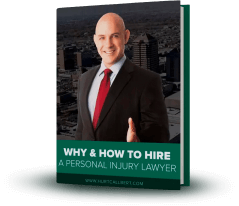
If you were involved in an Albuquerque accident, you probably noticed certain injuries right away. Broken bones, burns, and lacerations are typically easy to spot, but other types of injuries may not display symptoms for days or even weeks.
It is vital to evaluate injuries by seeking prompt medical attention after any accident. A doctor can conduct a thorough evaluation of your medical history and your current symptoms to determine the full extent of your injuries. They may even perform advanced testing to identify less obvious injuries in some cases.
What Are Some Commonly Recommended Medical Tests After a Car Crash?
When you visit the doctor after an accident, your doctor will likely begin your exam by asking questions about your injuries and the symptoms you are experiencing. Based on your answers, they may recommend one or more of the following medical tests:
- X-rays – During an X-ray test, an X-ray imaging machine uses electromagnetic radiation waves to develop images of the inside of your body. X-rays can produce pictures of your bones, organs, and other internal tissue structures.
- Computed tomography (CT) scans – A CT scan involves using X-ray beams all around your body to create a series of X-ray images from various angles. Doctors can get a detailed composite picture of a particular internal structure by sending these images to a computer.
- Magnetic resonance imaging (MRI) tests – An MRI machine uses strong magnets and radio waves to create detailed computerized images of internal organs and tissues. Each image typically represents only a “slice” or layer of the inside of your body, which can be used to produce useful 3D composites.
- Myelograms – A myelogram is a two-part imaging test specifically used to identify issues in the spinal column. During a myelogram, radiologists inject dyes into the spinal canal. They then use X-rays or CT scans to look for problems in the spinal cord, nerves, and other spinal tissues.
- Electromyograms – An electromyogram is a test used to identify muscular issues such as weakness, pain, or paralysis. To conduct an electromyogram, a doctor inserts electrodes on the ends of thin needles into the muscles to measure electrical activity in muscles.
- Nerve conduction studies – Nerve conduction studies are used to identify issues in the nervous system that cause pain, numbing, or weakness. Like electromyograms, doctors conduct nerve conduction studies by using thin electrodes to send electrical pulses to the nerves and measure how long it takes for the muscles to respond.
How Results from These Tests Can Impact Your Case
If you were injured in an accident, following your doctor’s testing recommendations is essential. Not only will this allow them to provide you with the proper care, but it can also help your case by:
- Establishing permanent documentation of your condition in your medical records
- Proving the existence of “invisible injuries,” such as internal wounds, issues with the muscular system or nervous system, and whiplash injuries
- Demonstrate to insurance adjusters and other interested parties that you are taking your health and recovery seriously
- Differentiating between any pre-existing conditions you have and any new or aggravated injuries resulting from the accident
What Your Lawyer Needs to Know
The type and severity of your injuries are two of the most important factors that impact a personal injury claim. As such, your lawyer will want strong evidence to prove the nature and extent of your injuries.
Suppose you decide to work with a lawyer to pursue your personal injury case. In that case, your attorney will likely need detailed information about your accident-related injuries and your overall health. In most cases, the best way to give them this information is by authorizing the release of your medical records. That way, your attorney can review your documents and records for dates, diagnoses, test results, and other information they’ll use to develop a strong case.
How Our Albuquerque Lawyer Can Help
Hurt? Call Bert. At the Parnall Law Firm, our dedicated Albuquerque car accident lawyer can help you seek fair compensation for your injuries after an accident. Contact us today to learn more about the Parnall Law Difference in a free initial consultation with a personal injury lawyer in Albuquerque.

































